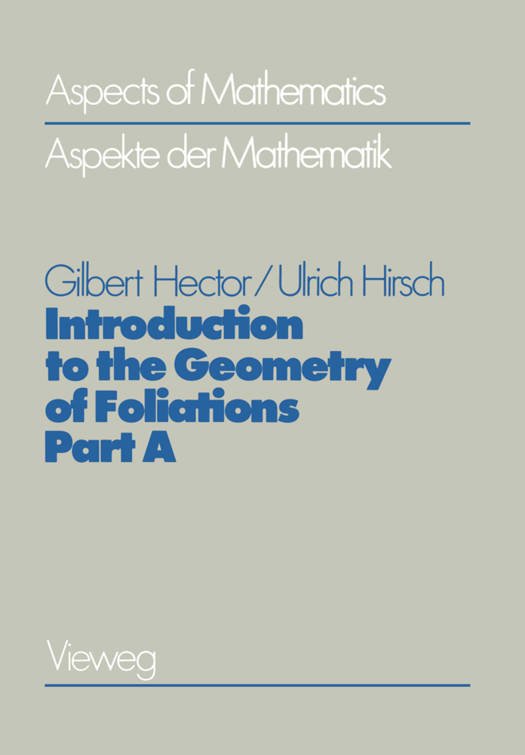
- Afhalen na 1 uur in een winkel met voorraad
- Gratis thuislevering in België vanaf € 30
- Ruim aanbod met 7 miljoen producten
- Afhalen na 1 uur in een winkel met voorraad
- Gratis thuislevering in België vanaf € 30
- Ruim aanbod met 7 miljoen producten
Zoeken
Introduction to the Geometry of Foliations, Part a
Foliations on Compact Surfaces, Fundamentals for Arbitrary Codimension, and Holonomy
Gilbert Hector
€ 111,95
+ 223 punten
Omschrijving
Foliation theory grew out of the theory of dynamical systems on manifolds and Ch. Ehresmann's connection theory on fibre bundles. Pioneer work was done between 1880 and 1940 by H. Poincare, I. Bendixson, H. Kneser, H. Whitney, and IV. Kaplan - to name a few - who all studied "regular curve families" on surfaces, and later by Ch. Ehresmann, G. Reeb, A. Haefliger and otners between 1940 and 1960. Since then the subject has developed from a collection of a few papers to a wide field of research. owadays, one usually distinguishes between two main branches of foliation theory, the so-called quantitative theory (including homotopy theory and cnaracteristic classes) on the one hand, and the qualitative or geometrie theory on the other. The present volume is the first part of a monograph on geometrie aspects of foliations. Our intention here is to present some fundamental concepts and results as weIl as a great number of ideas and examples of various types. The selection of material from only one branch of the theory is conditioned not only by the authors' personal interest but also by the wish to give a systematic and detailed treatment, including complete proofs of all main results. We hope that tilis goal has been achieved.
Specificaties
Betrokkenen
- Auteur(s):
- Uitgeverij:
Inhoud
- Aantal bladzijden:
- 236
- Taal:
- Engels
- Reeks:
- Reeksnummer:
- nr. 1
Eigenschappen
- Productcode (EAN):
- 9783528185015
- Verschijningsdatum:
- 1/01/1986
- Uitvoering:
- Paperback
- Formaat:
- Trade paperback (VS)
- Afmetingen:
- 170 mm x 244 mm
- Gewicht:
- 408 g

Alleen bij Standaard Boekhandel
+ 223 punten op je klantenkaart van Standaard Boekhandel
Beoordelingen
We publiceren alleen reviews die voldoen aan de voorwaarden voor reviews. Bekijk onze voorwaarden voor reviews.








